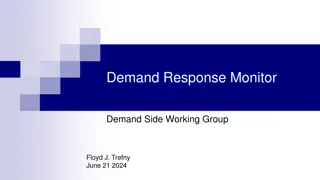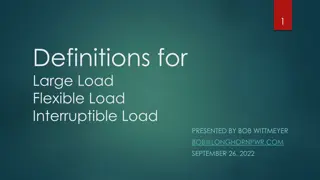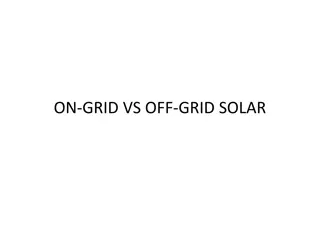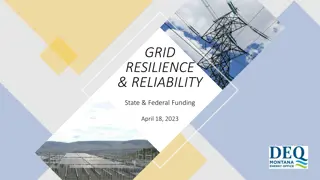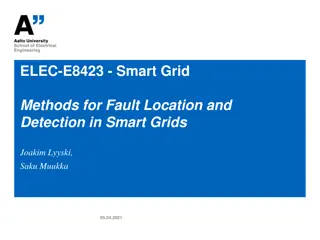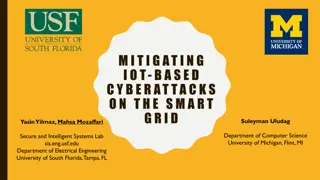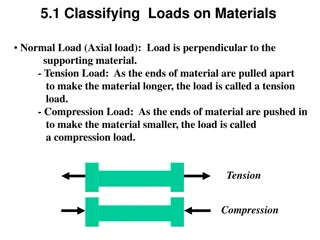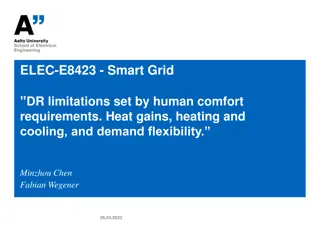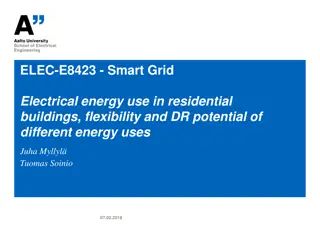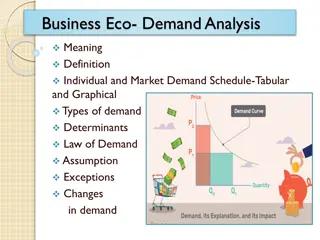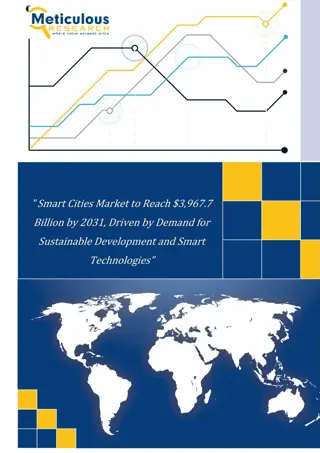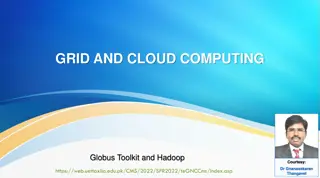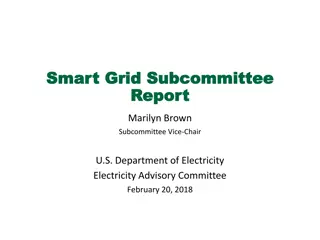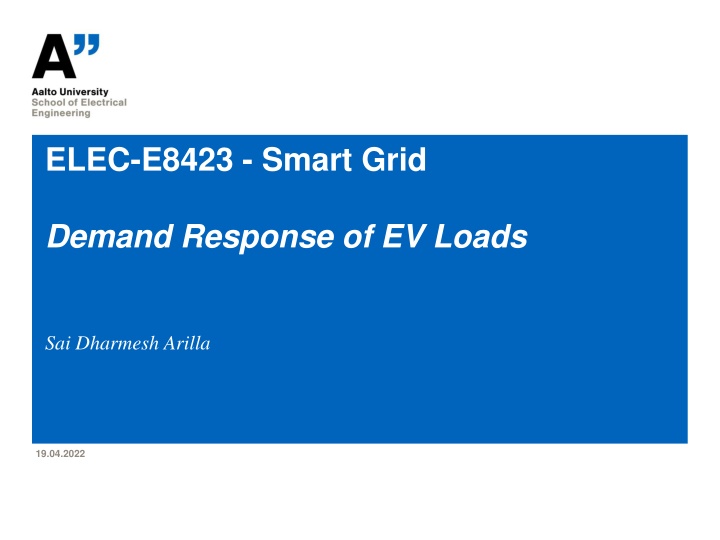
Smart Grid Demand Response for EV Loads Upgrade
EV adoption necessitates updating the electricity grid to manage increased demand from electric vehicles. Smart Grid technologies enable Demand Response strategies to balance peak loads, reduce grid overload, and optimize energy usage.
Download Presentation

Please find below an Image/Link to download the presentation.
The content on the website is provided AS IS for your information and personal use only. It may not be sold, licensed, or shared on other websites without obtaining consent from the author. If you encounter any issues during the download, it is possible that the publisher has removed the file from their server.
You are allowed to download the files provided on this website for personal or commercial use, subject to the condition that they are used lawfully. All files are the property of their respective owners.
The content on the website is provided AS IS for your information and personal use only. It may not be sold, licensed, or shared on other websites without obtaining consent from the author.
E N D
Presentation Transcript
ELEC-E8423 - Smart Grid Demand Response of EV Loads Sai Dharmesh Arilla 19.04.2022
Introduction EV adoption cannot be seamless without updating necessary ancillary services and support systems. One such upgrade should be to the electricity grid which have been the same from many years and last had their updates only because of air conditioners. Electric vehicles will be adding a demand equal to a household or even more to the grid. This the demand created by EV loads. Increased production is not the solution, but the grid should create a with strategies and Demand Response technologies which are enabled by Smart Grids. A smart grid is an electricity network allowing devices to communicate between suppliers to consumers, allowing them to demand, protect the manage distribution network, save energy and reduce costs European Commission, 2012. https://www.ampcontrol.io/ Page 2
The problem Demand and grid Overload Issues that grid faces by EV adoption: 1. Peak load imbalance 2. Voltage loss 3. Frequency imbalance. Almost fully electrifying all of road transport adds just 25% to global electricity demand in 2050 and as much as 15% of it can be shifted by applying demand response methods. At present, utilities have not recognized EVs as potentially disruptive necessity. But, there is a need to judge the demand based on commercial or personal usage, size of the battery and fleet operations. Bloomberg NEF Page 3
Solution Demand Response The Simplest way to understand demand response is that it is a technology-enables economic rationing for electric power supply. It involves action from both the utility companies and consumers. Automated Demand Response - Utility provider can inform any charging station to optimize its energy output based on the peak availability using ADR signals and OCPP communications. The customer individuals or charging station providers are notified of the change in charging duration. Demand Charges - Utilities charge a peak price when a vehicle draws peak power as opposed to a base price when it draws lower power. Time of Usage Tariff - Charge electricity users differently for different hours of the day. https://www.ampcontrol.io/post/ulti mate-guide-to-implementing-ev- smart-charging-in-ocpp- applications Page 4
DR Technology - Vehicle-to-Grid Electric vehicle batteries are large portable electricity storage houses. Utility providers have recognized the large storage any EV fleet provides such that the vehicles themselves play a positive role in peak demand balancing. This is made possible by bi-directional charging also known as V2G(Vehicle to Grid) charging. Most Vehicles are parked for 90% of the time. In such cases, V2G enables vehicles to supply electricity by discharging to the grid during peak hours when they are not in use and charged during non-peak hours. This helps in demand management but also as a revenue stream for fleet operators, public charger providers etc. Ravi, S.S.; Aziz, M. Utilization of Electric Vehicles for Vehicle-to-Grid Services: Progress and Perspectives. Energies 2022, 15, 589. https://doi.org/10.3390/ en15020589 Page 5
Review of Vehicle-to-Grid Technology Centralized V2G: A specific schedule and strategy is followed for calculated number of vehicles to support the grid at certain locations for specific time periods. Most beneficial to Utilities and Commercial EV Fleet owners(Uber) Utilities can develop a precise plan to supplement their peak shavings or RES intermittency. Independent V2G: Vehicles can supply power to the grid at random time from any V2G capable charger. Suitable for private EV owners. Difficult for Utility companies to understand and predict peak power availabilities. Non-standard power availability as the customer has the freedom to disconnect the bidirectional charging. Vehicles with CHAdeMO type chargers such as Nissan Leaf and the Mitsubishi Outlander PHEV currently enable bi-directional charging. Nissan also involves itself extensively in projects to commercialize V2G, such as UK s electric-nation project. Page 6
Conclusions Decentralization of electricity could further upgrade V2G as V2X technology where a fleet of EVs can power homes, offices, Buildings, even high loads such as factories, all connected by smart grids. Demand response will require investments largely from utility providers such as TSOs and in small quantities from large EV fleet owners or parking space providers(such as airports) but mandates and policies could ensure that electric vehicle manufacturers would enable their vehicles to perform bi-directional charging. Research focus should be two way Developing optimum energy usage cases for all consumers of all load conditions. Maximizing incentive options and decisive freedom for independent EV owners such that they choose to support Demand Response. Page 7
Source material used 1. Ravi, S.S.; Aziz, M. Utilization of Electric Vehicles for Vehicle-to-Grid Services: Progress and Perspectives. Energies 2022, 15, 589. https://doi.org/10.3390/ en15020589 2. Shariff, S. M., Iqbal, D., Saad Alam, M., & Ahmad, F. (2019). A State of the Art Review of Electric Vehicle to Grid (V2G) technology. IOP Conference Series: Materials Science and Engineering, 561, 012103. doi:10.1088/1757- 899x/561/1/012103 3. A. Hoke, A. Brissette, K. Smith, A. Pratt and D. Maksimovic, "Accounting for Lithium-Ion Battery Degradation in Electric Vehicle Charging Optimization," in IEEE Journal of Emerging and Selected Topics in Power Electronics, vol. 2, no. 3, pp. 691-700, Sept. 2014, doi: 10.1109/JESTPE.2014.2315961. 4. Y. Zheng, J. Luo, X. Yang and Y. Yang, "Intelligent Regulation on Demand Response for Electric Vehicle Charging: A Dynamic Game Method," in IEEE 10.1109/ACCESS.2020.2985578. Access, vol. 8, pp. 66105-66115, 2020, doi: 5. K. Qian, C. Zhou, M. Allan and Y. Yuan, "Modeling of Load Demand Due to EV Battery Charging in Distribution Systems," in IEEE Transactions on Power Systems, vol. 26, no. 2, pp. 802-810, May 2011, doi: 10.1109/TPWRS.2010.2057456. 6. Aro, M., M ki, K., Evens, C., Vesa, H., & Sch pper, C. (2020). Aggregator Business Pilot. VTT ; Technical Research Centre of Finland. VTT Research Report No. VTT-R-01187-20 07.02.2018 Page 8
Source material used 7. EV charging promises a demand response bonanza for utilities, if they can handle it - https://www.utilitydive.com/ 8 https://www.ampcontrol.io/ 9. IEA Global EV Outlook. 07.02.2018 Page 9
Thank You Page 10



